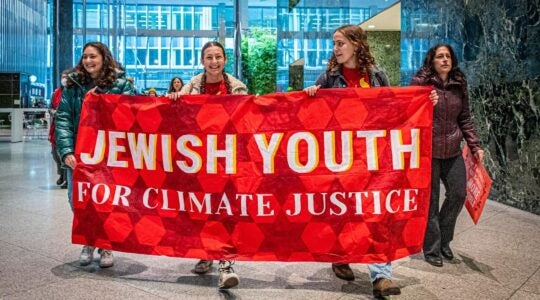One indication of the wide gap between American Jewish and Israeli attitudes toward Judaism and its expression is the case of women’s prayer at the Kotel,
or Western Wall.
Responding to the controversy over the recent confrontations and arrests of women activists seeking to pray at the Wall in non-traditional ways, Prime Minister Benjamin Netanyahu has assigned Natan Sharansky, chairman of The Jewish Agency for Israel, to review policies regarding prayer at the wall and make recommendations.
Among the current prohibitions are services led by women, and women wearing prayer shawls. There is widespread support among American Jews for the activists, a group known as Women at the Wall, comprising participants from all of the religious streams who gather at the Kotel for services each month on Rosh Chodesh. Several have been arrested and treated harshly in recent months, and many American Jews, the majority of whom are not Orthodox, see the issue as one of religious freedom and civil rights, viewing the attitude of the government as repressive.
Israelis, by contrast, do not rank women’s prayer at the wall as an important issue, even among activists for women’s rights. They view it as but one of many religion-state policies they are seeking to change, underscoring the fact that the Chief Rabbinate, which determines civil matters in the country, including marriage, divorce and burial, is under the control of unbending haredim.
“For most Israelis, religious rules governing these aspects of their lives are far more intrusive and onerous than limitations on prayer at a site they never visit,” noted a JTA report.
That’s the reality. And while some American Jewish leaders take heart in the fact that the prime minister views the women’s prayer issue serious enough to warrant a review, others point out that similar high-profile attempts to resolve the impasse have been tried in the past with no resolution. Those advocating compromise say the women should pray at Robinson’s Arch, an historic site near the Kotel, while the activists insist on their right to pray at the Kotel itself, as men do.
It has long been said, only half-jokingly, that the synagogue of choice for Israelis who don’t go to services is Orthodox. That’s the Judaism they know, whether they believe or not. But there has been a notable change in recent years, with increasing numbers of young Israelis exploring their Judaism, though not in the denominational categories we know best of Orthodox, Conservative and Reform. Young people are studying texts, including Talmud, holding services by the sea in Tel Aviv, and seeking spiritual connections to their heritage.
Perhaps as they come to appreciate the religious as well as historical significance of the Western Wall, they will become more supportive of women’s rights to pray there, just as many American Jews oppose the hold that the rigid Chief Rabbinate has over personal choices in the religious lives of Israelis.
The Sharansky committee should not only find ways to accommodate religious participation for women at the Kotel but seek major reforms in a Chief Rabbinate that is causing Israelis to grow more distant from — rather than closer to — their Judaism.
The New York Jewish Week brings you the stories behind the headlines, keeping you connected to Jewish life in New York. Help sustain the reporting you trust by donating today.




